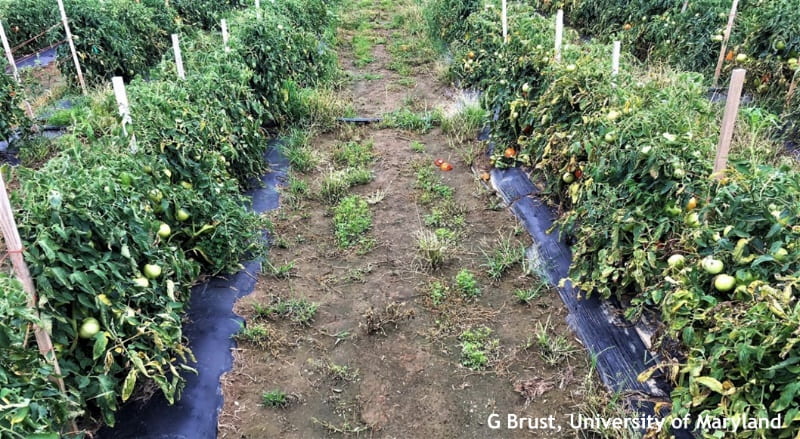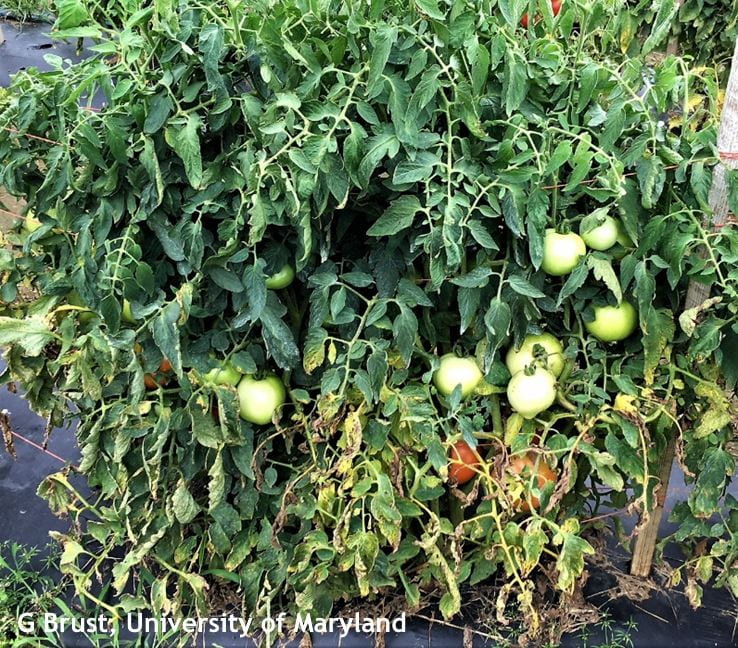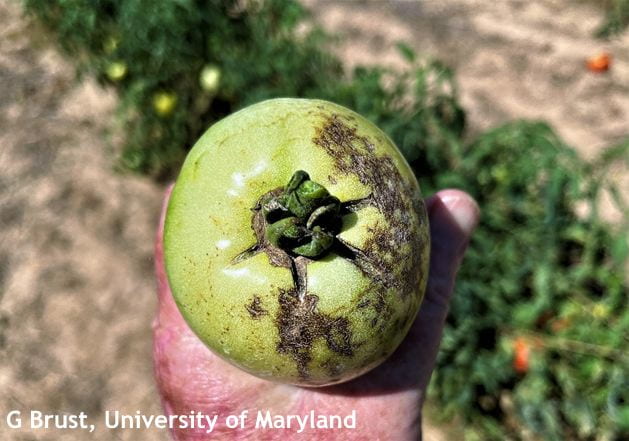Jerry Brust, IPM Vegetable Specialist, University of Maryland; jbrust@umd.edu
This week has seen a great number of problems pop-up in tomato fields throughout our area. The first problem is that bacterial and fungal diseases are spreading. The fungal pathogens usually can be contained with timely (as difficult as that might be) fungicide applications. Bacterial spot or speck on the other hand can be much more difficult to control once they get started and the weather remains wet and warm. Using Actigard along with a protactant fungicide (mancozeb) and a copper product will usually reduce the severity of the disease (Fig. 1).
Several other fields had similar symptoms as seen in Figure 2, where the bottom half of the foliage has been decimated but the top of the plant’s foliage looked okay. If fungicide sprays are applied as needed the top foliage should do well enough. The problem arises with the green fruit being exposed by the missing foliage. These fruits are in danger of sunburn or sunscald (Fig. 2) and rain check (the many, tiny concentric cracks that form on the shoulder of fruit and can expand over time (Fig. 3). This is when using shade cloth (20-30% shade-inducing) would greatly reduce the chances of sunscald and rain check.

Figure 1. Row on the right had fungicides and Cu applied, row on left same fungicides and Cu plus Actigard.

Figure 2. Bottom half of plants have lost a great deal of foliage and expose fruit to sunscald

Figure 3. Exposed side of tomato fruit with rain check.
